|
WHITE
LIGHT:
Lets start with
the white light key shot, This is actually - as are all "white
light" shots at this point taken with a SBIG G filter that
is within the visual white light band and improves the seeing
and contrast dramatically over a non filtered shot. Coming onto
the disk is AR1335, which is now the most active flaring sunspot
group on the Sun. Just below it (south) is the quad AR1354 group,
which is a great imaging target with its associated faculae.
The largest spot on the disk here, which is no behemoth is AR1352,
a curious group with many tiny pore like companions.
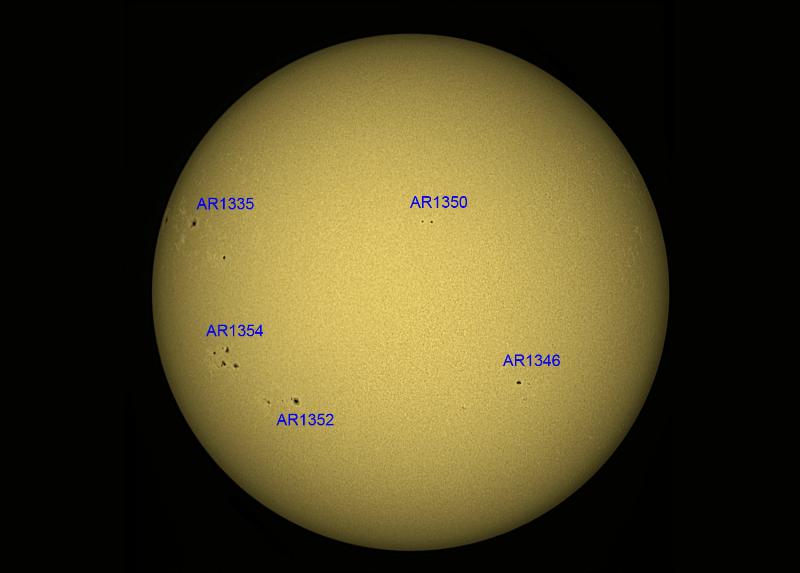
Here is a view
without the labels for a nice clean look:
The rather grainy
look to the disk, especially in the center of this SV80s shot
is due to the solar granulation beginning to become resolved.
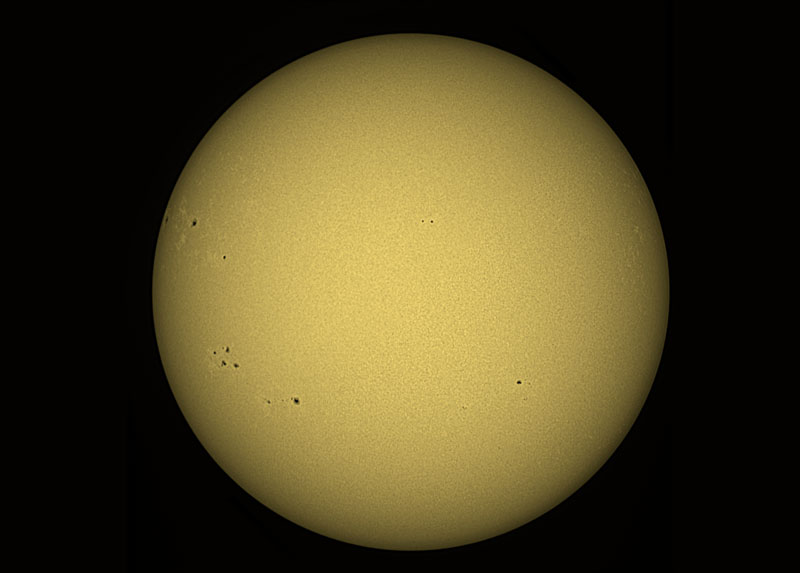
Lets take a
look at the AR1354 quad group a bit more closely. For the first
time I tried a Televue 2x Big Barlow. I thought the poor seeing
made it impossible to use the usual 3x Klee, so tried this giant
Barlow. Still, seeing was not clean, but there is significant
improvement in small details. This image is really noisy too,
I just could not pull out the details without bringing up the
noise a bit. Ill probably not use this Barlow again for solar.
Makes a great guide scope Barlow however...
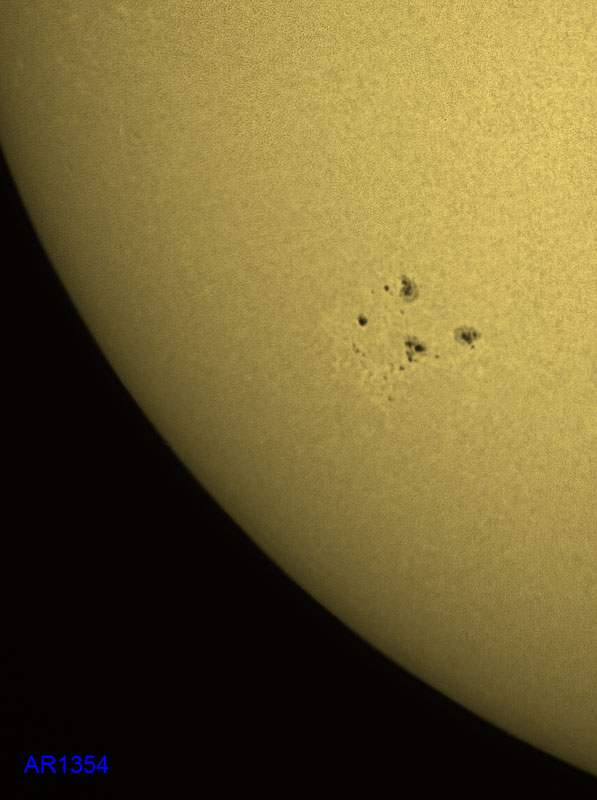
Now on to the
Hydrogen Alpha images with the new Lunt LS100! The seeing was
a lot better in these than the white light, which was taken later.
This is why you must choose which scope to image with first -
the seeing starts out best, and then as the ground and trees
warm in the rising sun, the seeing degrades very quickly. This
is especially true at high elevations, since the air temperature
changes so rapidly.
FULL DISK. This
is the very first solar disk shot I have taken with the DMK camera
on a solar scope. It is a four part composite, since I can get
exactly 1/4 the sun at at time at prime focus with the LS100.
Images were combined in iMerge:
The orientation
is the same as the white light shots above. You can still see
the sunspots, but they are now surrounded by fine chromospheric
details such as plage (white areas around sunspots), and fine
filaments and spicules. Note the huge dark filament to the upper
right, this one will be spectacular when it reaches the limb
in a few days and protrudes over the edges to form a big prominence.
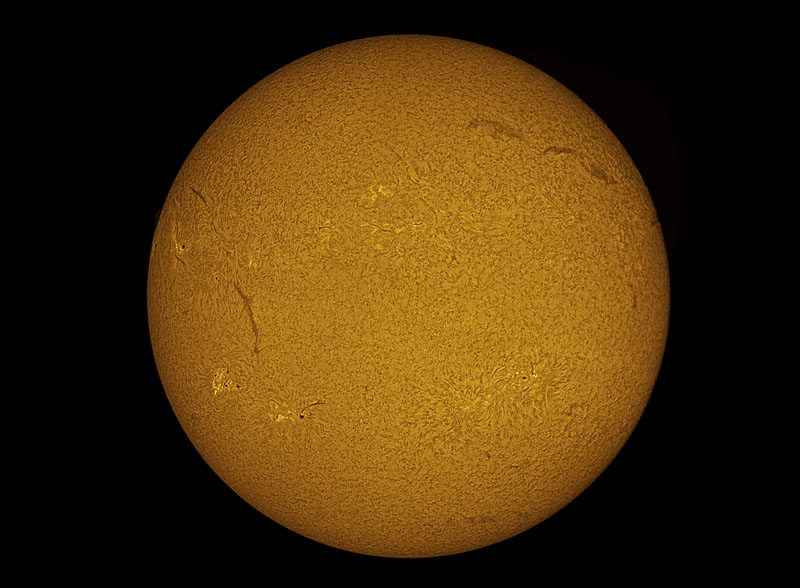
Lets take a
look at that big filament now, with the 2x Coronado Barlow. Chains
and rings of spicules surround this filament all the way to the
limb.
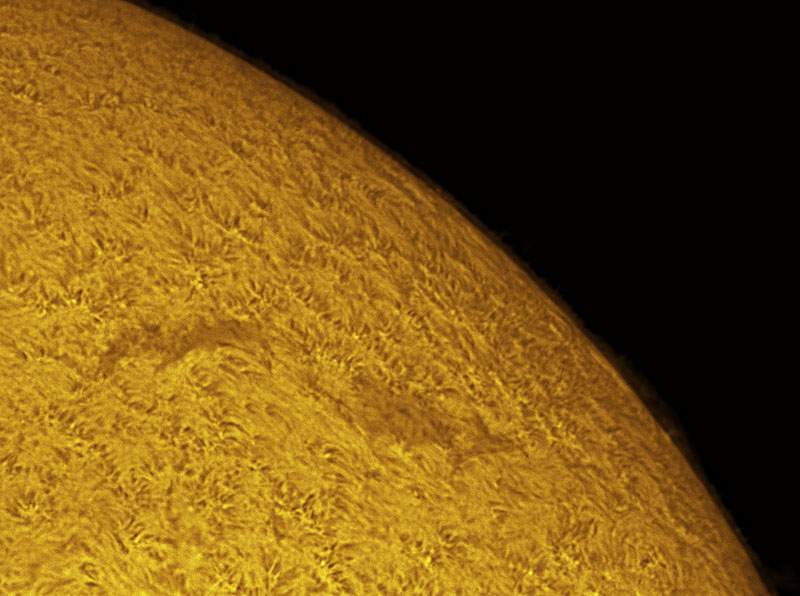
Lets now examine
the other, eastern limb where the quadruple sunspot, and another
big prom is lurking with the 2x Barlow:
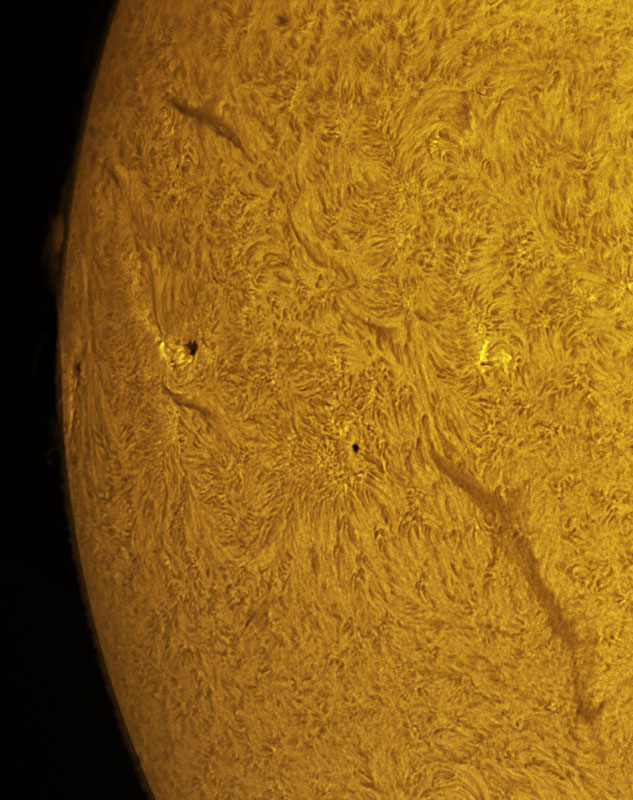
A closer view
now of the limb prominences now, in the same field as the above
image. To make this type of image, we take two shots of the same
part of the Sun, one exposed for the prominences which overexposes
the disk, then add in the disk shot properly exposed over it
to make the view complete. The Lunt 100 is starting to shine
now, showing much more detail than the 40mm ever did on proms:
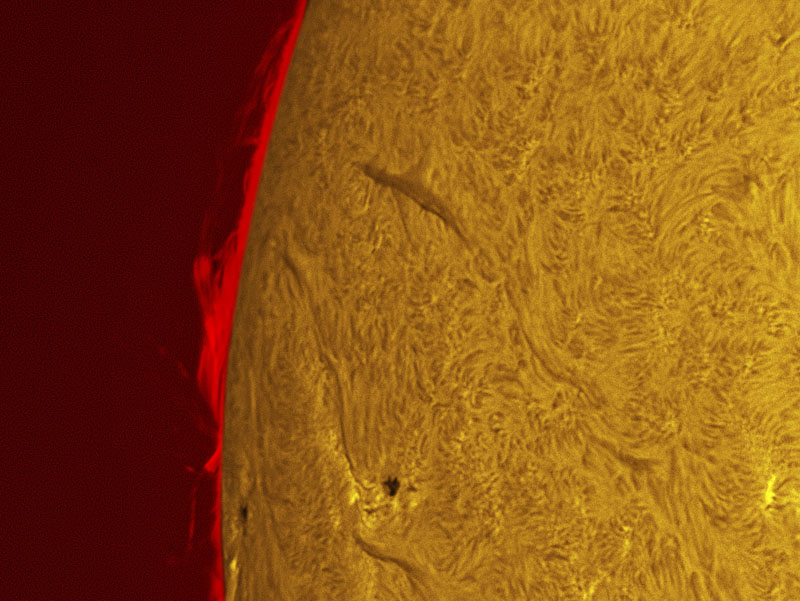
Here, seeing
was starting to degrade rapidly, making for some noisy images,
but this stunning flame shaped prom gives the appearance that
the sun is actually on fire.
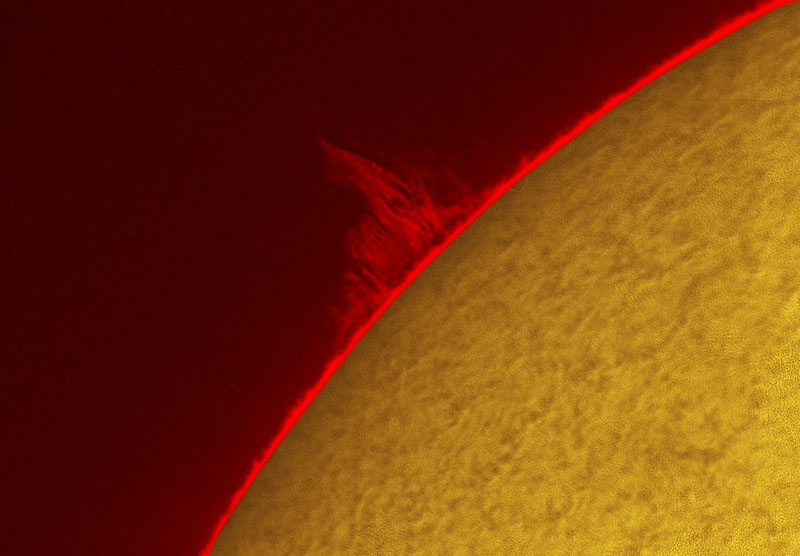
On the western
limb, and rotating off is this nice little arch prom:
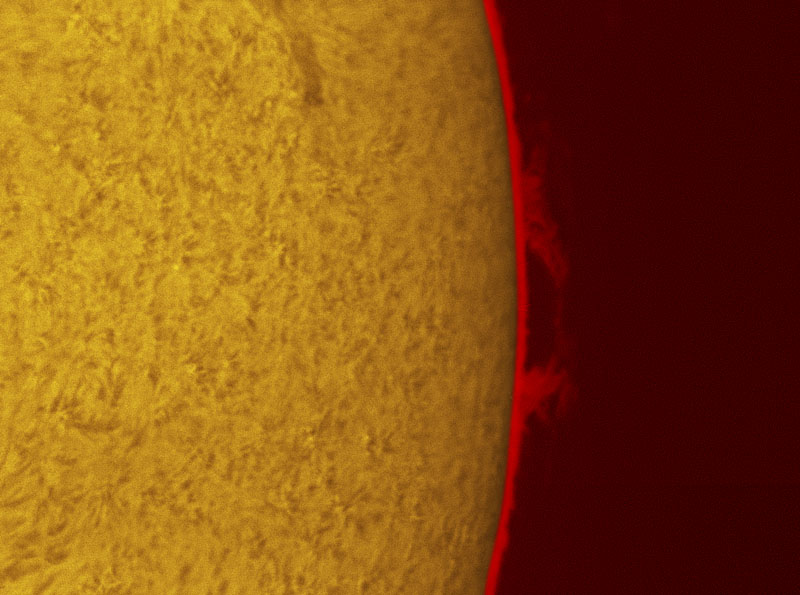
On the north
limb, this rocket like prom appears to be shooting off into space.
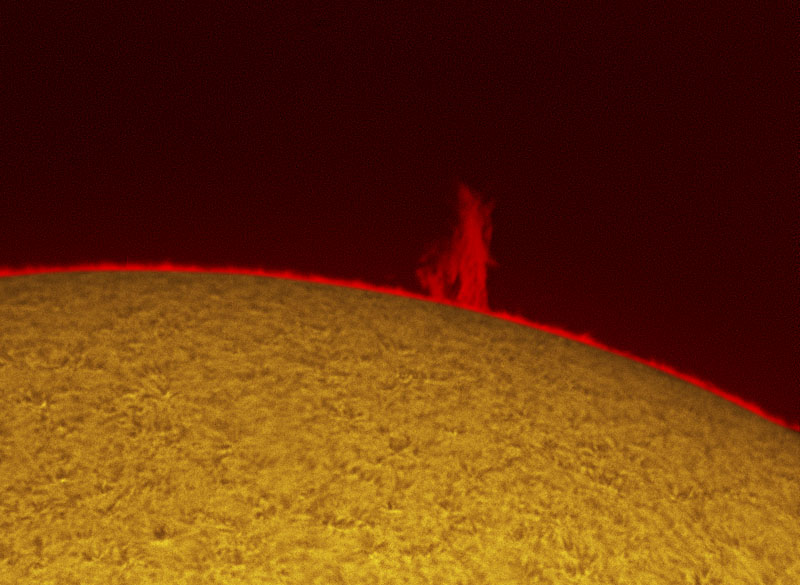
More
images taken on Wednesday, before we left for San Diego:
The sunspots
have morphed significantly in the past few days since the weekend,
our beautiful quadruple spot AR1354 is just a ghost of its former
significance. A chain of larger spots however is coming onto
the Suns western limb on the left.
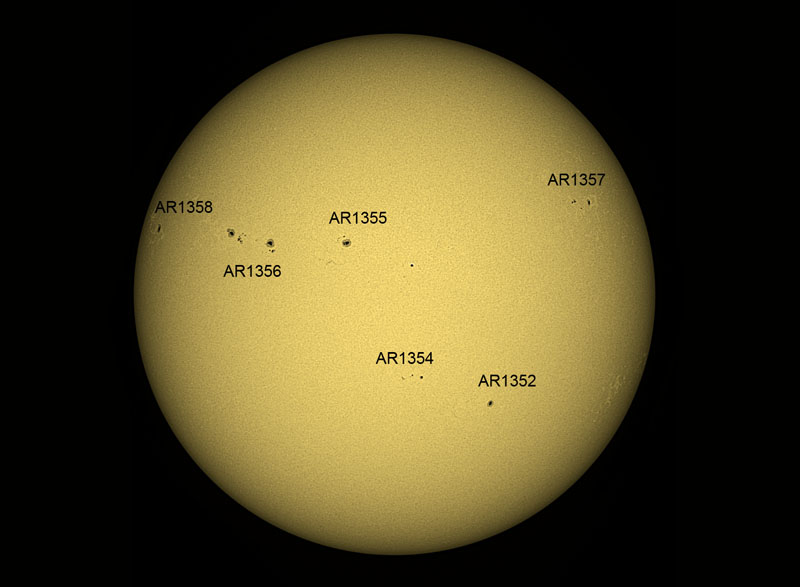
Same full disk
view without the designations:

Below, we see
the western limb with the new spot chain. On the left is AR1358
with some gorgeous spiral chains of faculae in this white light
limb shot. On the right is the pair AR1356. These and all white
light shots with SBIG-G filter, Zeiss 80mm f/6 and Astro Solar
safety film 5.0.
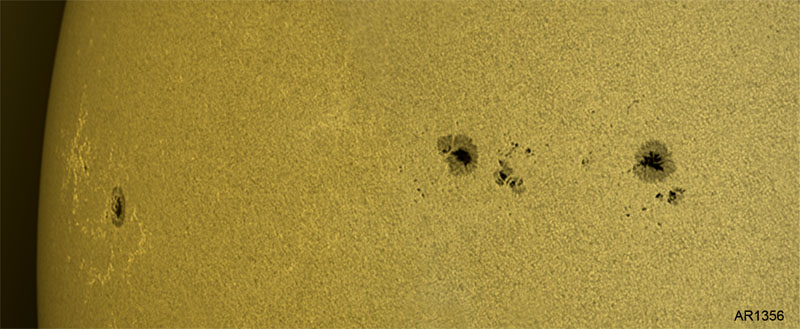
AR1355 is alone
near the center of the disk. Granulation is present, but seeing
was not as good this morning. Notice the light bridge within
the spots umbra, and the small chain of pores surrounding.
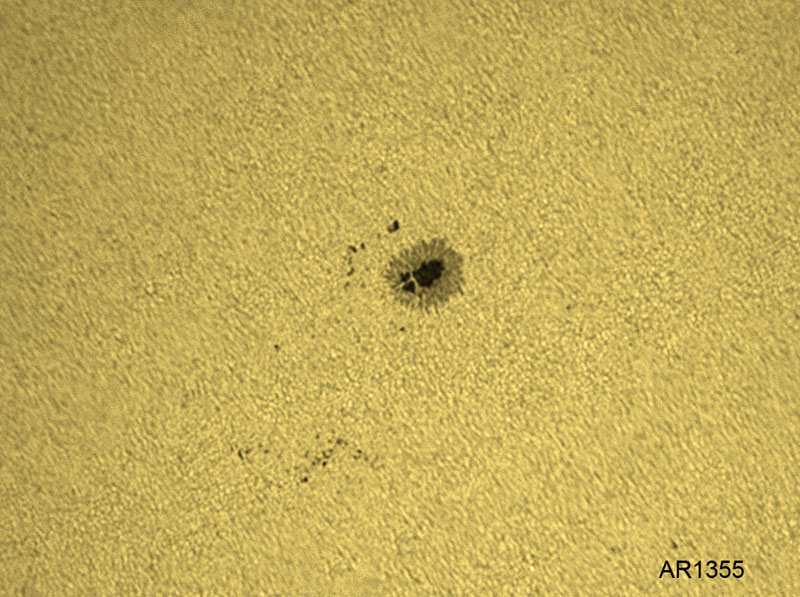
Hydrogen
Alpha Shots with Lunt LS100THa:
Below is a full
disk composite, from four disk, and six prom frames. Im still
not decided on the prom colors yet, but it seemed to work well
on this one with a realistic pink hue.
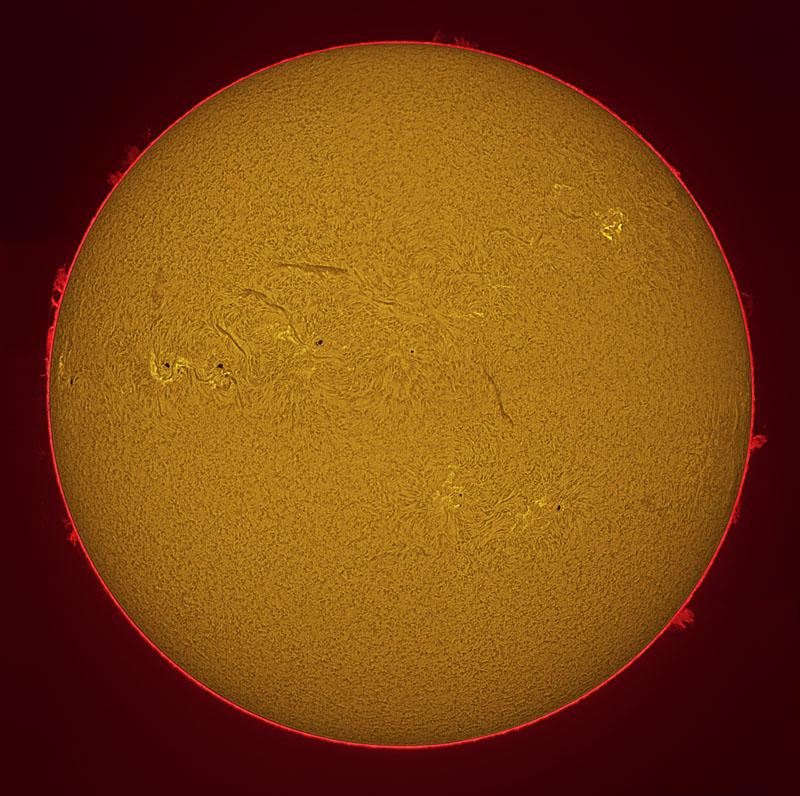
Ar1357 Flaring. Flares last only an hour or less, and their capture
is rare and beautiful.
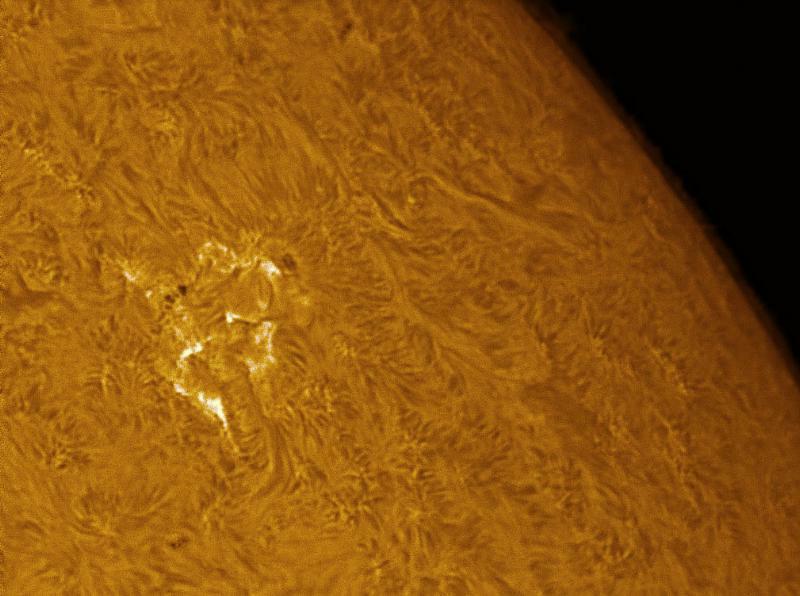
Composite of
sunspots on the western limb. Beautiful swirls of magnetic plasma
activity surround AR1356.
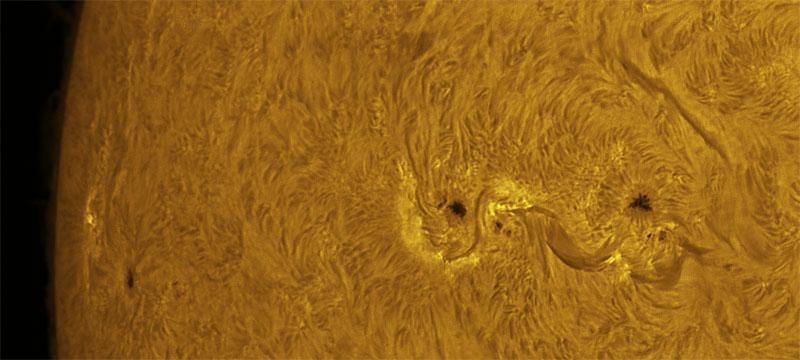
AR1352 along
on the eastern limb shows structure in the bright plage near
the spot
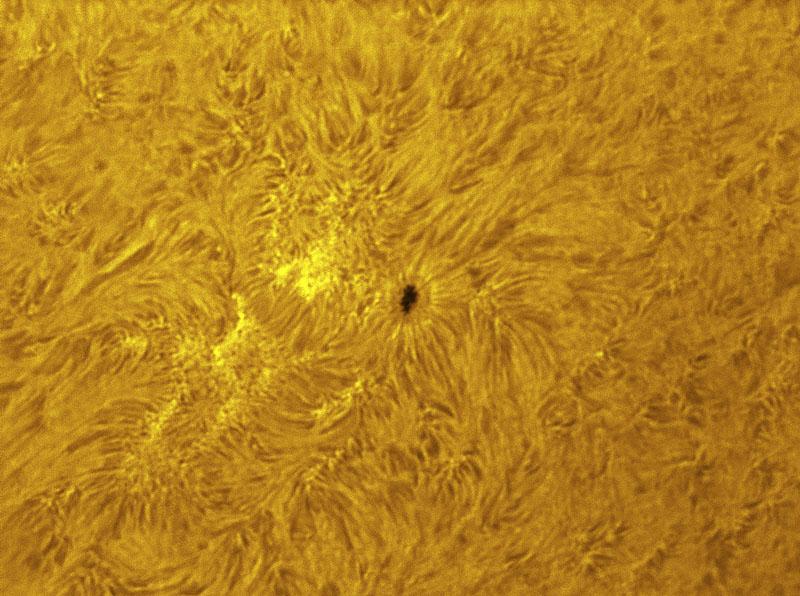
What is left
of AR1354, the former Quadruple sunspot group. It is decaying
rapidly. So sad to see it go...
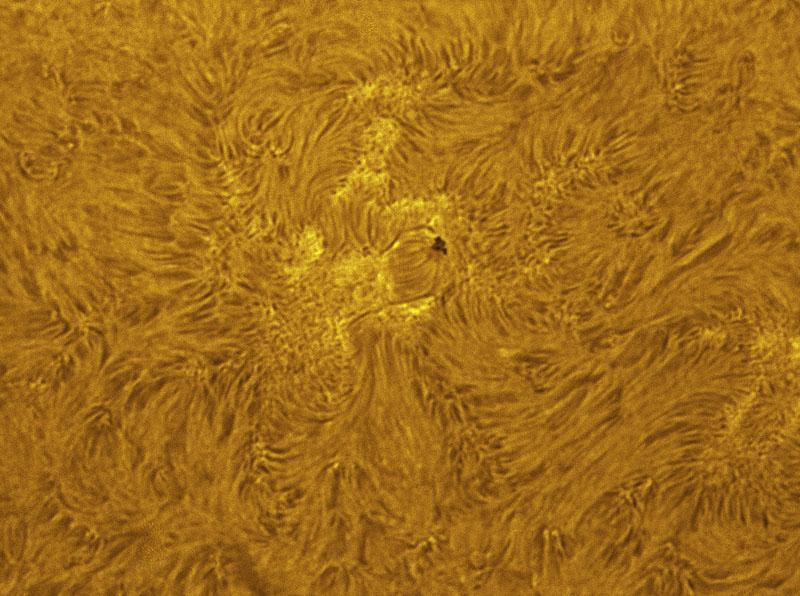
PROMINENCES
ON THE LIMB:
A beautiful
small arch on the eastern limb. Seeing now is degrading very
rapidly, so I did a quick tour of proms on the limb. Still, you
can see the spicules around the edges clearly.
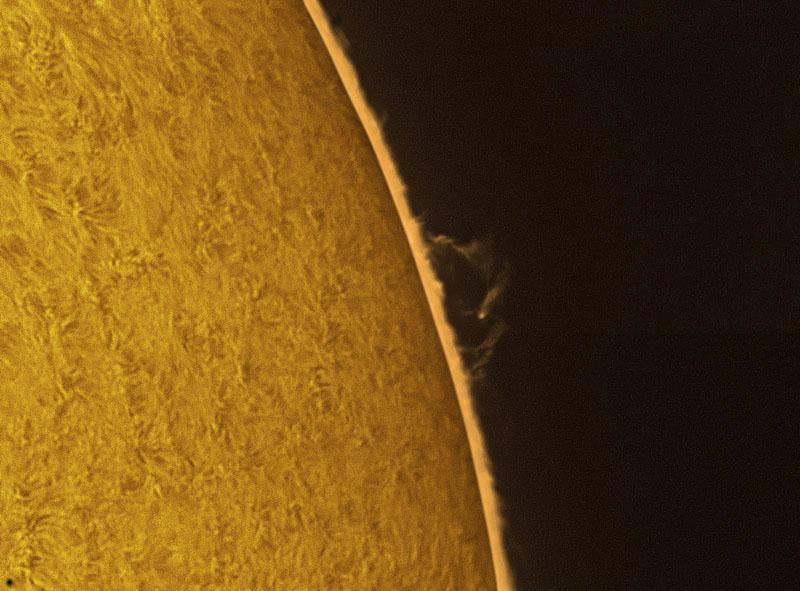
On the north
limb we find this group of Hedgerow proms.
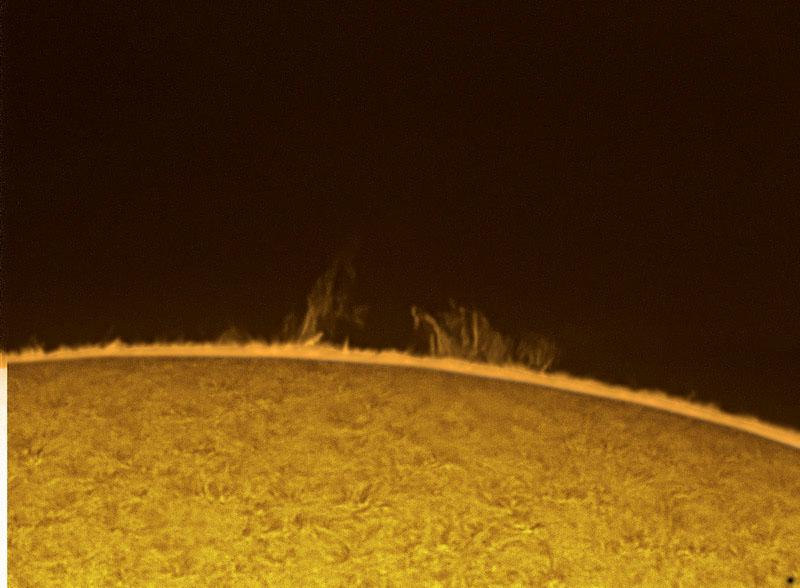
Seeing was falling
apart fast, this very complex group of hedgerow types shows some
very nice vertical striations.
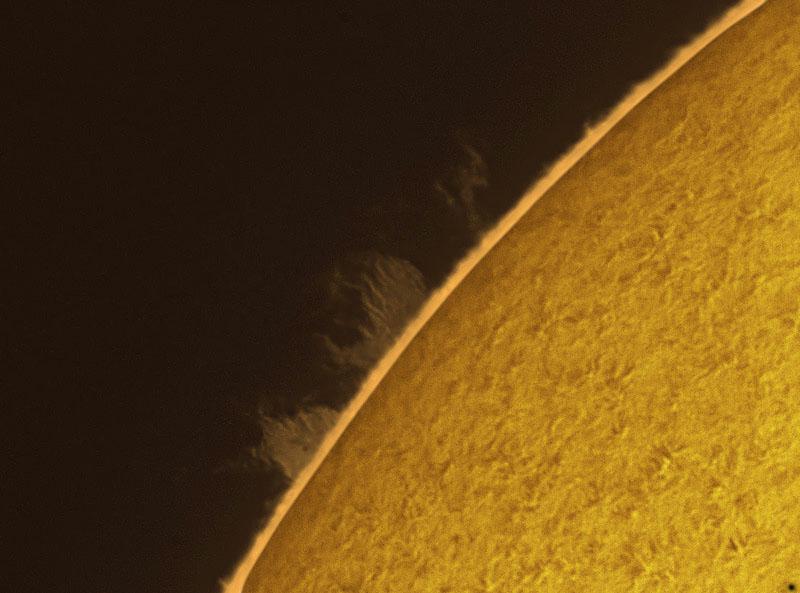
Seeing is gone.
But one last shot of a set of pillar like proms on the western
limb. A week later, it lifted off and shot into space!
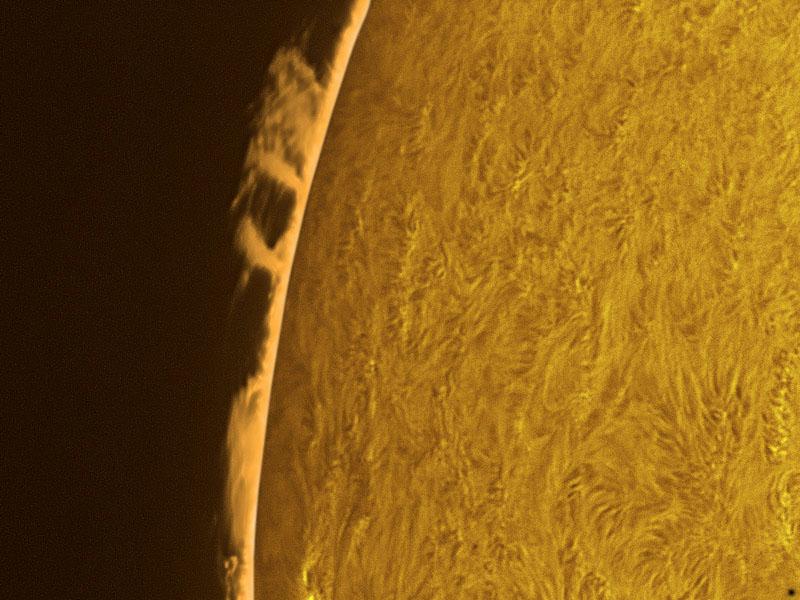
Finally, this
is a fish eye shot of the inside of the observatory at the end
of the shooting session, when the clouds started rolling back
in. The Lunt is on top of the mount, and the SV80 with a Baader
Astro Solar Safety film front filter for white light shots is
on the bottom.

| Weekly Report For the week of Saturday November 19 - Friday November 25
Instruments: Lunt LS100THa Halpha or SV80S with Zeiss Apochromat Platform: Astrophysics 1200 Camera: DMK 3U (1024x768) Location: Payson, Arizona Elevation: 5150 ft. Sky: Seeing 7/10, Transparency 9/10 Outside Temperature: 45F Processing: Registax 6, Photoshop CS2 Solar Home Page HOME SCHMIDT GALAXIES EMISSION NEBS REFLECTION NEBS COMETS GLOBULARS OPEN CLUST PLANETARIES LINKS























